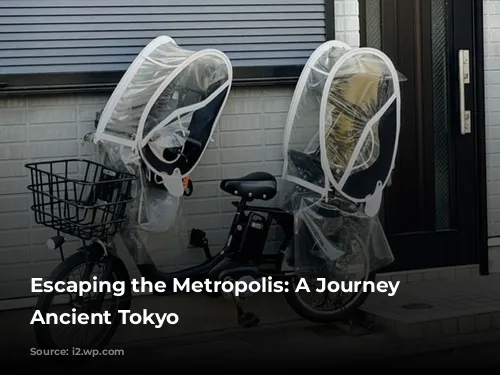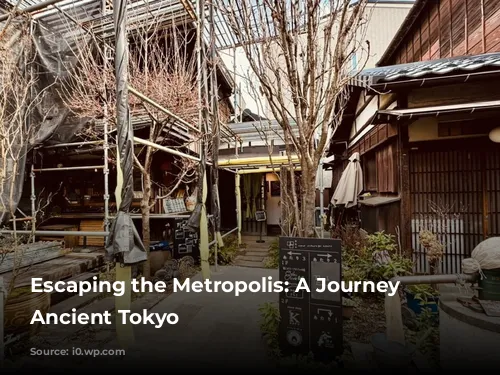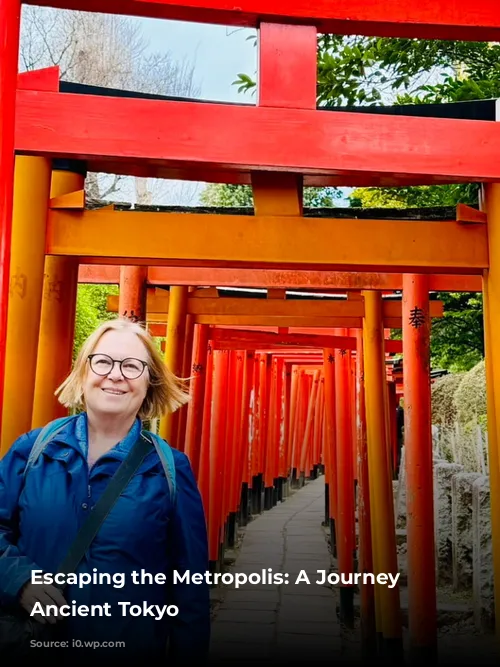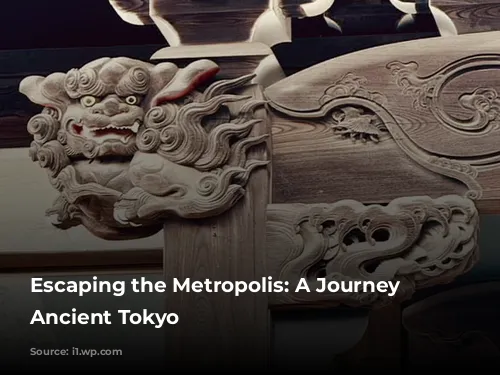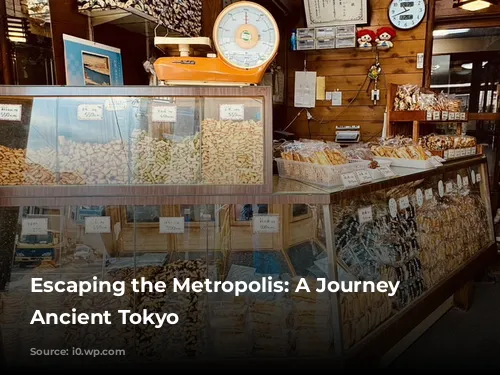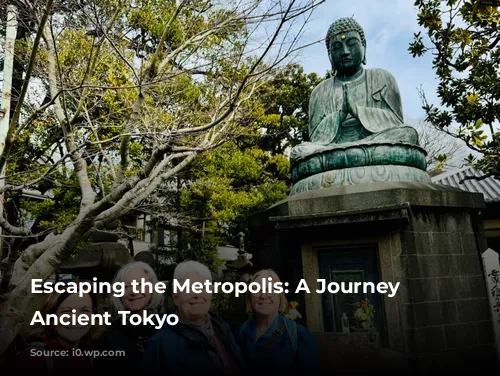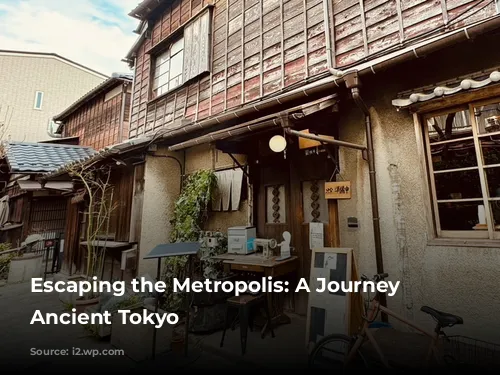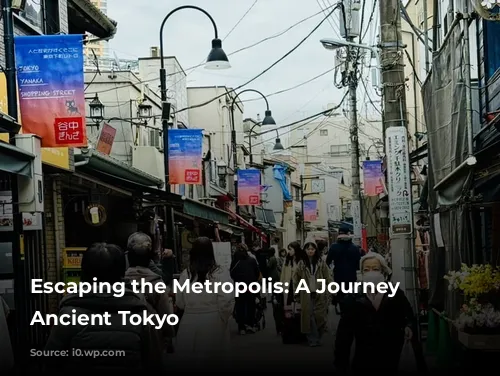Let’s journey back in time and escape the modern skyscrapers of Tokyo! This time, we’re venturing north, away from the hustle and bustle of the city center, to discover a hidden gem: the historic Yanaka district.
Imagine a place that survived the devastating Great Kanto Earthquake of 1923 and the firebombing of World War II. Yanaka stands as a testament to time, boasting a captivating blend of ancient shrines, serene temples, and charming old wooden buildings. This district is a haven for artists, local eateries, and quaint shops. It’s a place where history whispers through every corner.
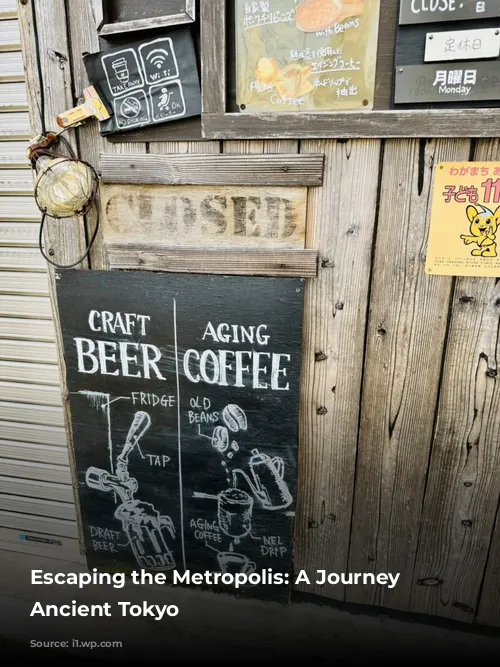
A Journey Back in Time
Our adventure begins at the Nippori train station, the gateway to Yanaka. We were a little late, thanks to a slight navigational mishap – we boarded the wrong train! Thankfully, our trusty smartphones with GPS came to the rescue. Our guide, Eriko, assured us that the other member of the tour was also running behind, so no worries!
The name “Yanaka” actually originates from the “yanaka ginger” once cultivated in this area. Today, it’s affectionately known as the temple district, with over 70 temples dotting its landscape. Our first stop: Tennōji Temple, established in 1274. This temple’s serene grounds, adorned with a magnificent bronze Buddha statue, provided the perfect backdrop for a group photo, even including Shannon, who’s preparing for the upcoming Tokyo Marathon!
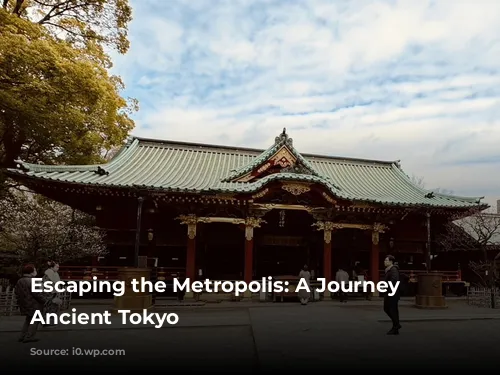
A Stroll Through History and Tranquility
Just a stone’s throw away, we found ourselves at the Yanaka Cemetery, a Buddhist temple adjacent to the station. We were a month too early to witness the path awash with the breathtaking beauty of cherry blossoms. Yet, even without the vibrant bloom, the cemetery’s tranquility was palpable. Here, we found large stones etched with the achievements of renowned individuals who have found their final resting place here.
We paused reverently at the tomb of the last Shogun, Tokugawa Shinobu. He ruled as the 15th Shogun, ending a turbulent power struggle with the Meiji Emperor in 1867. In a moment of wisdom, he declared it was wiser to end the conflict and focus on defending Japan from encroaching Western influence. His tomb is secured behind iron bars, proudly displaying the three-leaf Tokugawa crest.
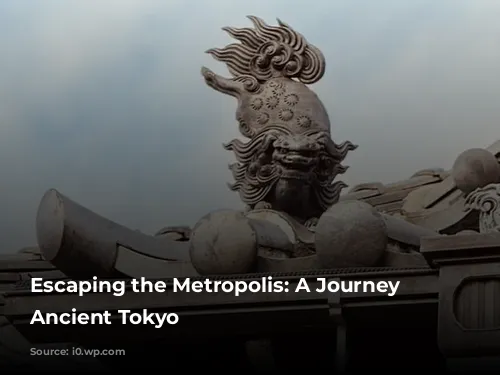
A Journey Through Traditional Charm
After leaving the cemetery – complete with a small playground and a police station – we walked through quiet streets lined with charming shops. The air was crisp, and bicycles provided protection from the chilly temperatures.
The streets were adorned with beautiful Buddhist temples and Shinto shrines, so many that I struggled to match my photos with their stories.
Eriko, our knowledgeable guide, shared that younger generations are actively working to preserve Yanaka’s old wooden buildings. They’re breathing new life into these structures, starting small businesses like a cluster featuring a beer hall, a bakery, and an oil shop. It’s heartwarming to see tradition blend with innovation.
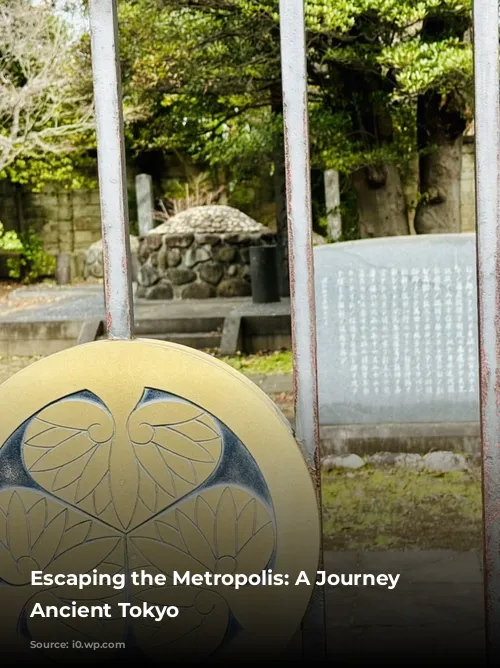
A Shrine With A Sacred Path
Across a bustling street, a mix of old and new buildings led us to the Nezu-jinja Shrine, built in 1705. It stands as one of the oldest Shinto shrines in Japan. After days of exploring temples and shrines, it was easy to feel a bit jaded. But Nezu-jinja held a special charm.
The paths leading to the shrine were lined with captivating torii gates. In Shinto belief, these gates symbolize portals connecting humans to the spiritual world. The gates, typically built from wood and painted in vibrant vermilion, feature two overhead lintels supported by pillars. At Nezu Shrine, the path of torii gates snakes its way up a hillside adorned with vibrant azalea bushes. We arrived a bit early for the April festival, when the hillside explodes with blossoms from over 100 azalea varieties.
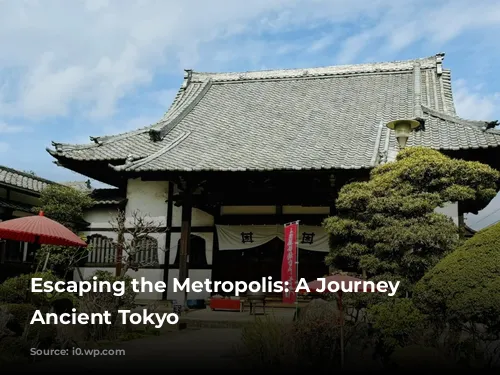
A Culinary Delight and a Touch of Japanese Culture
Before concluding our tour, we indulged in a delightful array of rice crackers. Flavored with matcha, curry, spices, and sugar, these were unlike anything you’d find in an American supermarket! Their unique flavors and textures were a welcome treat.
Our last stop was in Yanaka Ginza, the neighborhood shopping district, where I snagged a small, embroidered washcloth. I noticed that most Japanese restrooms don’t provide towels for drying hands. Locals carry their own! In fact, trashcans are rare in Japan. The Japanese practice of packing away trash and disposing of it at home is a testament to their environmental consciousness.
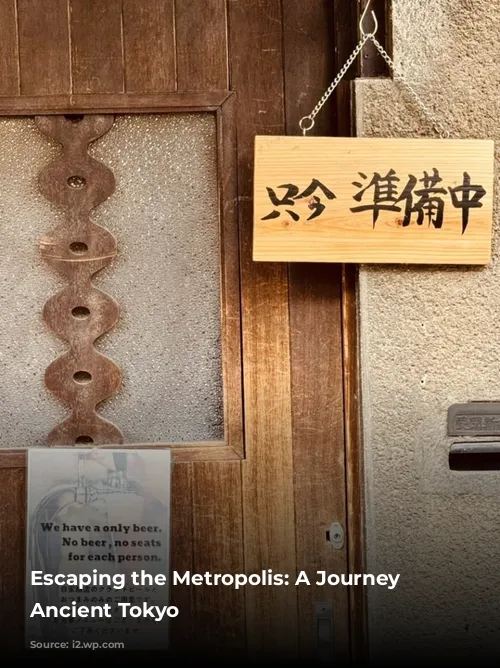
Back to the Ship and a Breathtaking View
We successfully navigated two trains to return to our ship, ready for a relaxing soak in the hot tubs after a day of exploration. Captain Frank announced that our next port call at Omaezaki was in jeopardy due to heavy winds. While I was eager to explore a new Japanese port, especially one near Mount Fuji, I wouldn’t mind a restful day at sea either.
Our journey through Yanaka was a captivating escape from the modern bustle of Tokyo. It was a reminder that even in a city teeming with innovation, there’s a reverence for history, tradition, and the beauty of simple things. It’s a place that whispers stories of the past and inspires a sense of wonder for the present.
